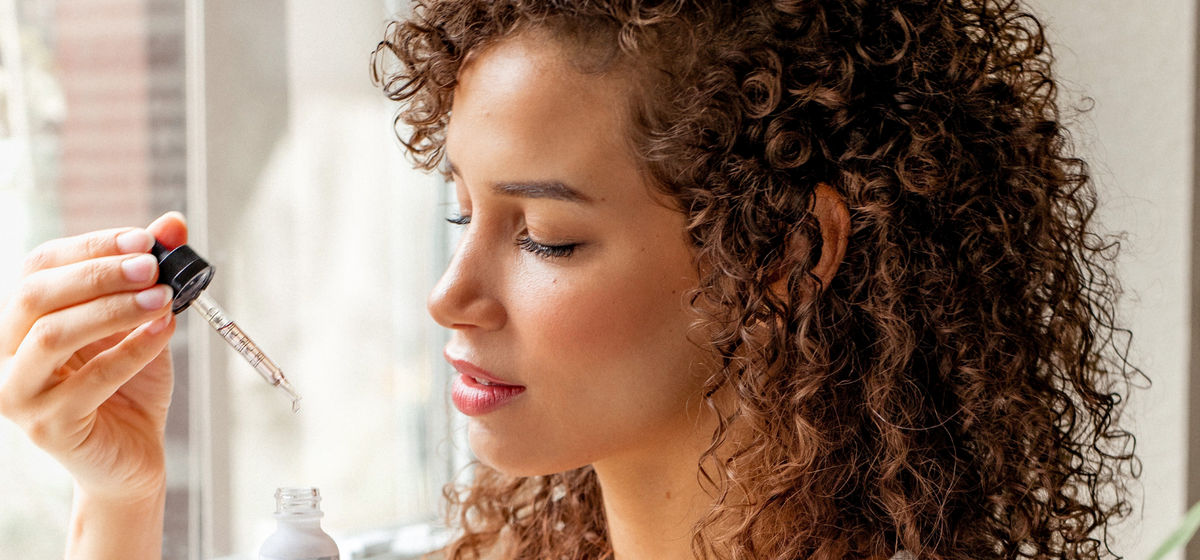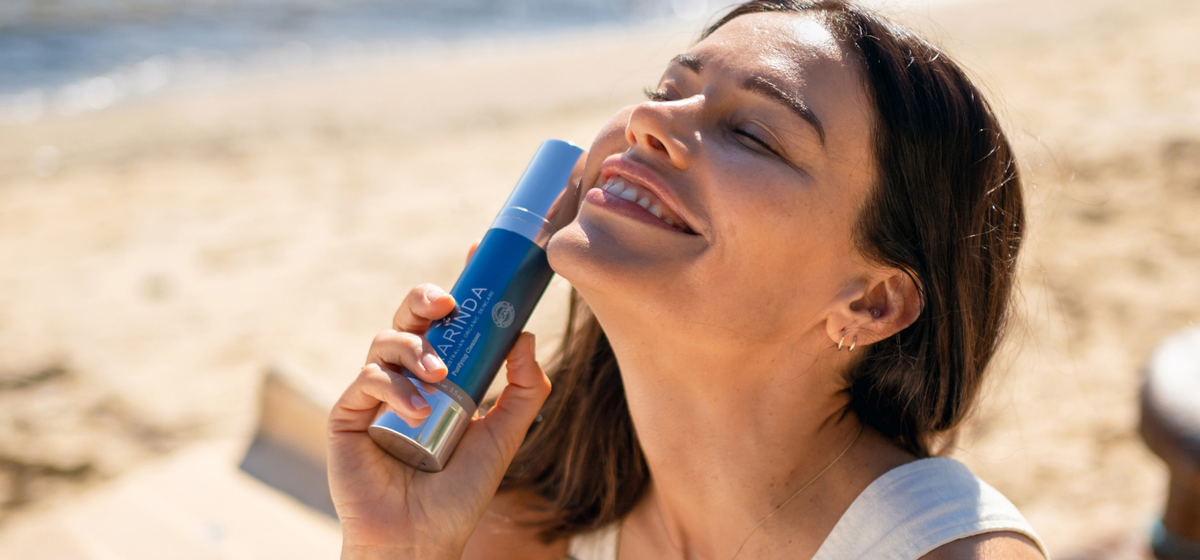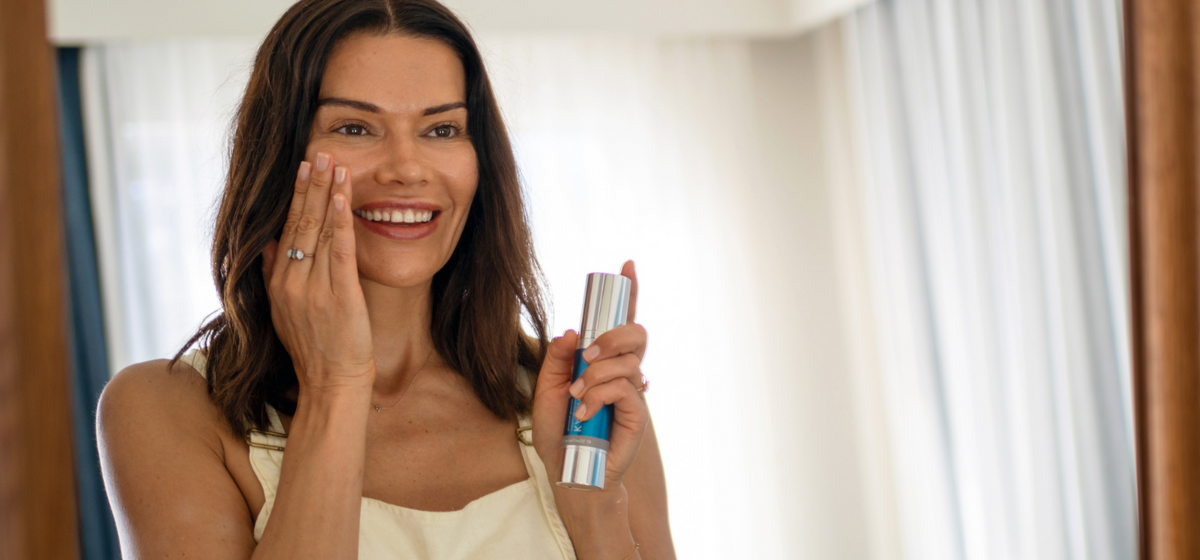How To Detox Your Beauty Routine in 2019

Move over green juice cleanses and yoga memberships, why not start the new year with a healthy resolution of a different kind?
2019 will be the year I ditch toxic products and switch to clean, green beauty!
Our tips on how to detox your beauty routine will get you started on a path to ditching the toxins. It’s truly one of the best decisions you can make for your skin and long-term health.
Avoid skincare containing the common toxic ingredients
Begin your beauty cabinet detox by clearing out skincare products containing ingredients linked to long-term health issues. Here are a few of the questionable ingredients to look out for that are common in many skincare products.
Parabens
Since the 1950S, parabens have been included in many common beauty products like lotions, shampoos, scrubs, deodorants and cosmetics to act as a preservative. While parabens do a great job preventing bacterial growth, studies have also shown a possible link between parabens, breast cancer and reproductive issues. It’s believed parabens disrupt hormone function by mimicking oestrogen which can trigger an increase in breast cell division and tumour growth.
Although the true danger of parabens has been contested, why not choose the ‘better safe than sorry’ route and stick with paraben-free products. The most commonly used parabens are methylparaben, propylparaben, and butylparaben.
Phthalates
A family of industrial chemicals, phthalates can be found everywhere. Many personal care products (hair care, body wash, cosmetics), fragrance, household cleaners, and food contain these chemicals.
They’ve been linked to lung, liver and kidney damage and can also affect the reproductive system.
Formaldehyde
Formaldehyde is a colourless gas that is commonly used in beauty and skincare products to act as a preservative. According to the Australian Competition & Consumer Commission:
In excessive amounts, formaldehyde can cause dermatitis, hair loss, permanent skin sensitisation and irritation of the nose and eyes. It can also trigger asthma and breathing difficulties. Formaldehyde is also classified as a Group 1 carcinogen by the World Health
Organisation International Agency for Research on Cancer as a chemical known to cause cancer in humans in circumstances where there is chronic high exposure.
If you’re feeling overwhelmed, just choose one skincare product to start with. Find a toxic-free alternative that works for you and make the swap one product at a time.
We’ll take this chance to blow our own horn just a little! Every single ingredient we use in Karinda formulations has been thoroughly researched and assessed for safety. You will not find parabens, sulphates, artificial fragrances and colours, petroleum by-products or mineral oil, propylene glycol, EDTA or PEG in any Karinda product. We’re proud to be cruelty-free too!
Swap synthetic perfumes for natural fragrance
If you’re using a synthetic perfume, it’s likely to be packed with hormone-disrupting chemicals. The ubiquitous ‘fragrance’ on the ingredients list can hide dozens of toxins. To protect their own secret formulas, brands are legally allowed to withhold the names of some ingredients on the label, instead just lumping them all together under the title ‘fragrance.’
A much healthier option is choosing a 100%, organic oil based fragrance. Aussie scent creators IME have some beautiful options, all free from artificial and animal fragrances, colours, phthalates, parabens or synthetic ingredients.
Choose natural soaps instead of antibacterial hand wash
An artificial antibacterial agent, the chemical triclosan was designed to help kill and hinder the growth of bacteria on the surface of the skin. Triclosan can interrupt with the body's thyroid hormone metabolism, may be a potential endocrine disruptor and there are concerns it can lead to a weakened immune system. Banned from use in household soaps in the US by the Food and Drug Administration in 2016, there is no ban on the chemical in Australia.
Another problem with triclosan is it doesn’t break down easily. This makes products with triclosan vulnerable to adverse chemical reactions when it washes down the drain and ends up in our ocean and waterways. Ultimately it kills off microscopic bacteria in the water environment that the rest of the food chain is dependant on.
Instead of using harsh detergents to do the simple job of washing your hands, opt for a natural bar soap as a safe alternative.
Ditch shampoo containing harsh detergents
When it comes to your hair, bubbles are bad news. Synthetic detergents like sodium laureth sulfate (SLES), create the frothy foam that makes your hair feel so ‘squeaky clean’ but is doing serious damage in the process. Which isn’t surprising, when you know this detergent is capable of degreasing car engines.
Sodium laureth sulfate strips away your hair’s natural protective barrier of oil, which can cause irritation, dryness and trigger the overproduction of oil, meaning hair becomes ‘dirty’ quickly again. This cycle keeps us buying shampoo, too.
Luckily, there are now plenty of brands offering shampoos without these harsh chemicals, and if you really want to go next level, you could even give shampooless lifestyle a try. It’s not for everyone but some staunch ‘no shampoo’ advocates (usually with curly, wavy hair or thick hair) swear by it.
Review your makeup stash
Similar to skincare, chemicals like parabens are added to makeup to keep bacteria and mould from growing posing the health concerns we pointed out earlier. Other problematic ingredients to look out for in your everyday makeup include:
- Carbon Black (Black 2) as it gives mascara and eyeliner a velvety black colour but it’s coal tar. Yes, you read right; coal tar.
- Polyethylene is a plastic, which some studies have shown to be carcinogenic and a skin irritant and used in eyeliners, mascara, eye shadows, eyebrow pencils, lipstick, blushers, face powders and foundations.
- Phenylenediamine is a type of coal tar dye and a respiratory toxicant which can be contaminated with heavy metals. You might see it listed as CL followed by a five-digit number.
While you’re editing your makeup bag, don’t forget to bin any product (synthetic or natural) that has passed the expiry date. If the expiry date isn’t listed on the product check out this general guide.
Is a beauty detox in the plan for 2019?
Leave a comment
Comments will be approved before showing up.
Also in News

3 Big Skincare Mistakes You Don't Want To Make

Active Ingredient Percentages: What You Need to Know


